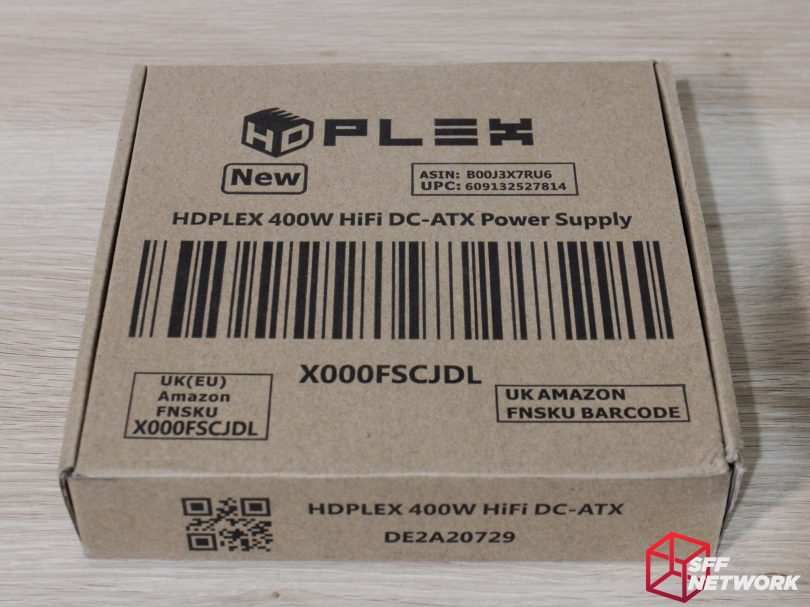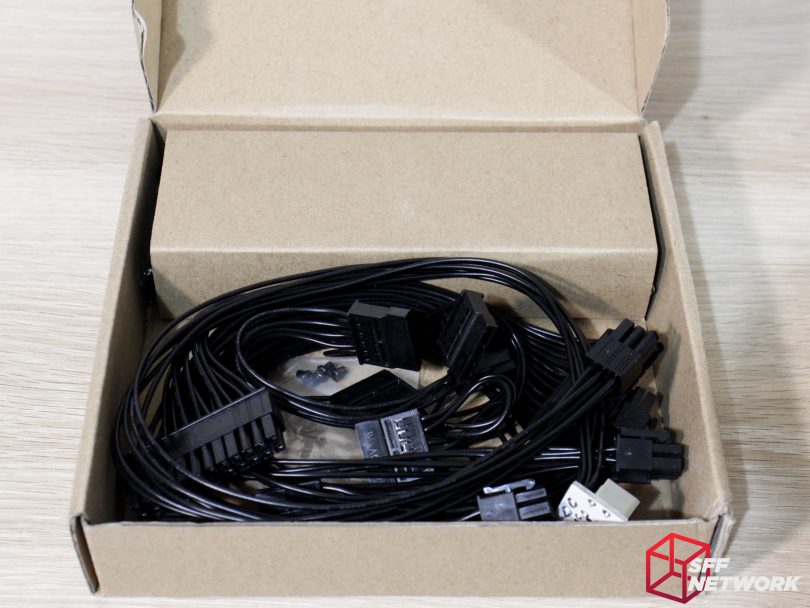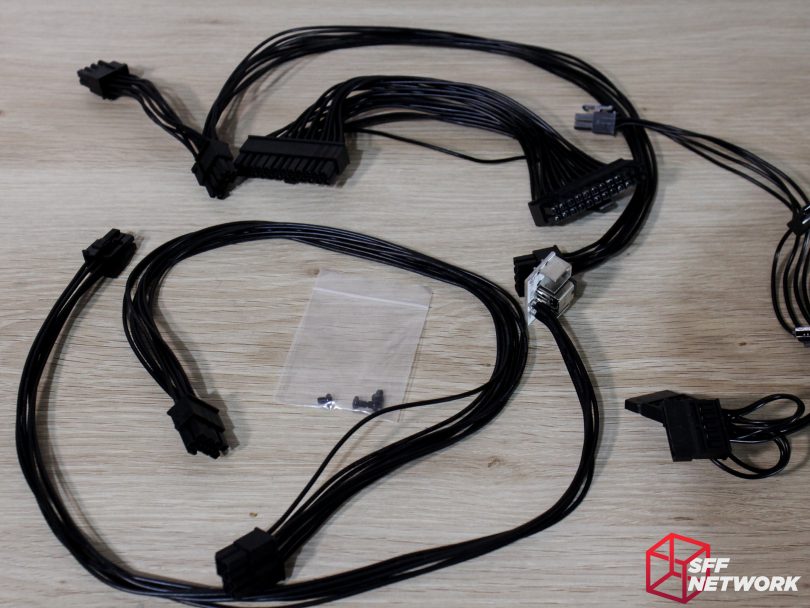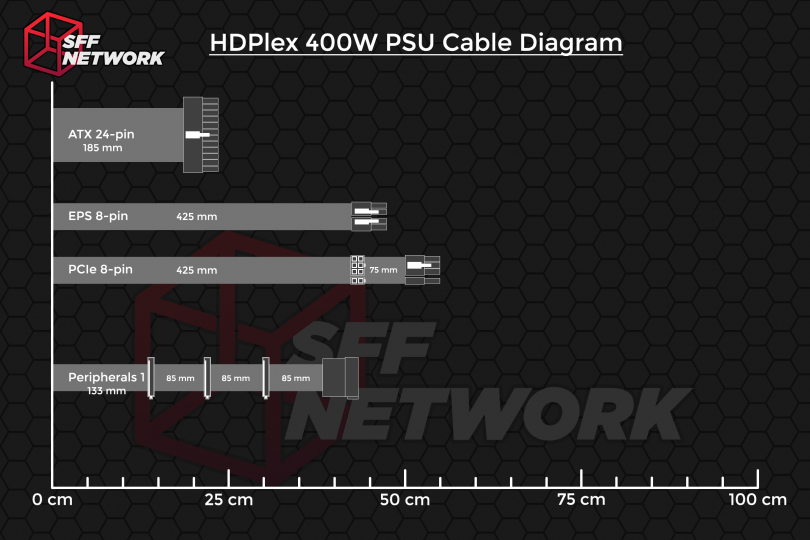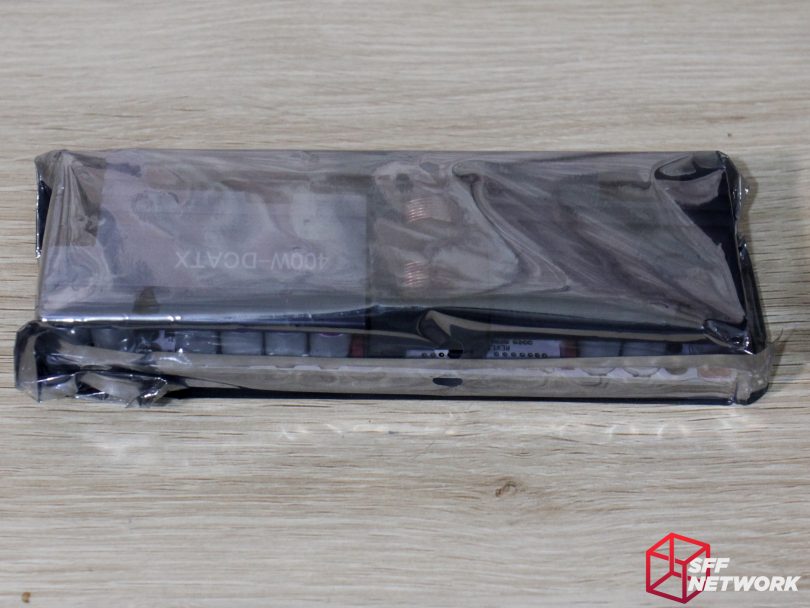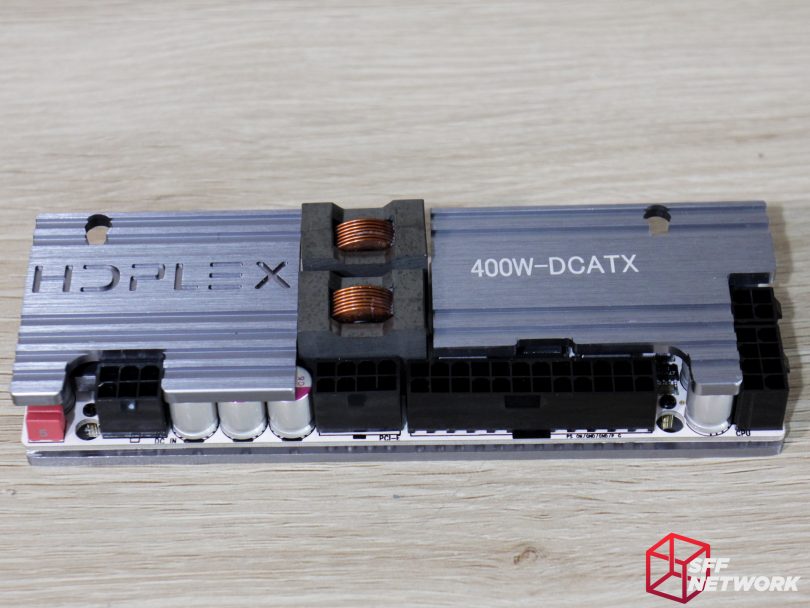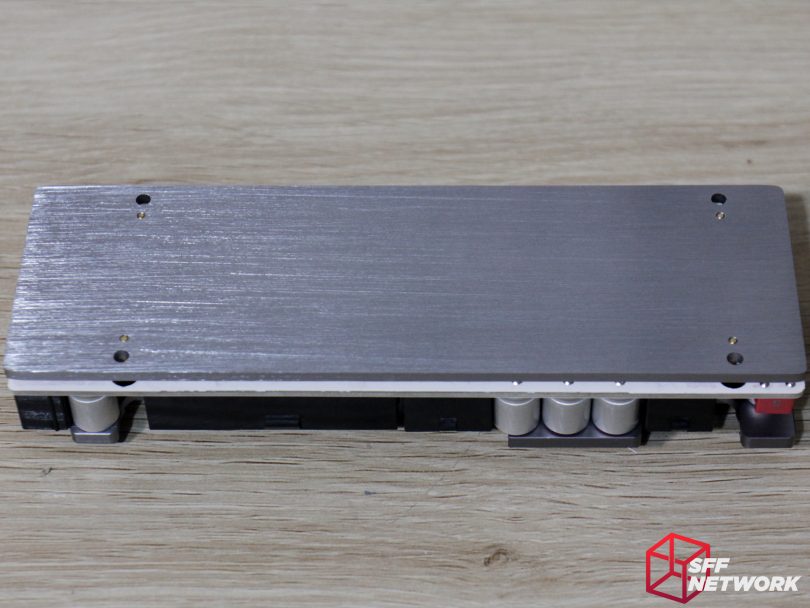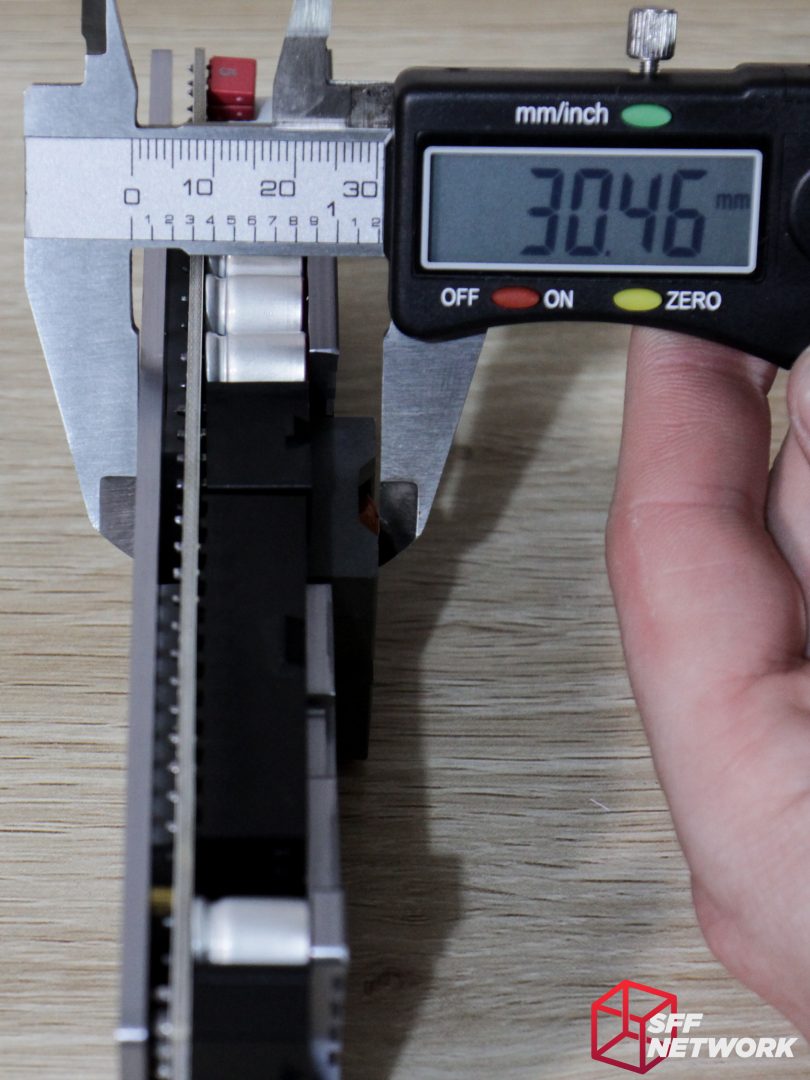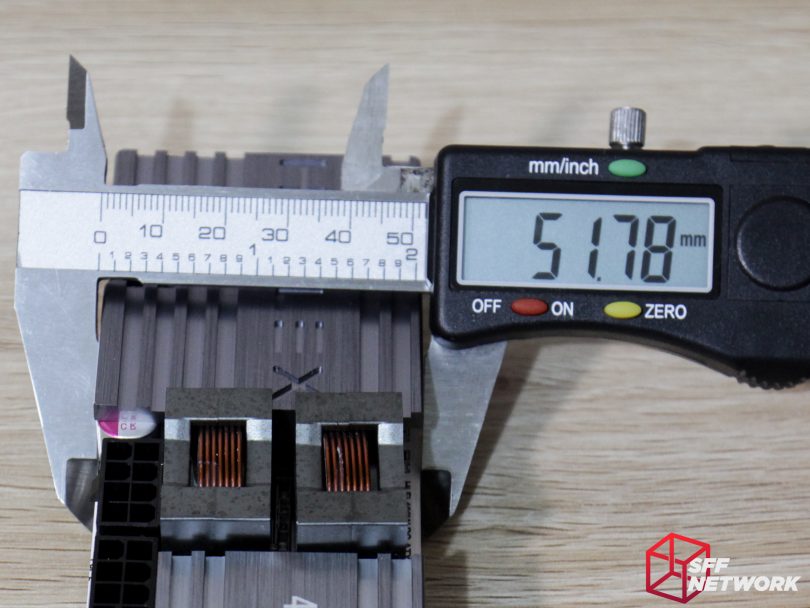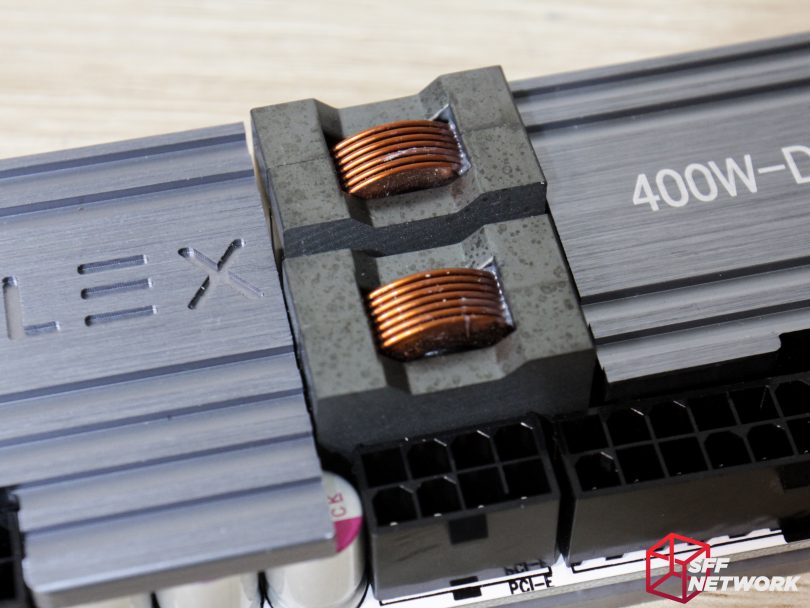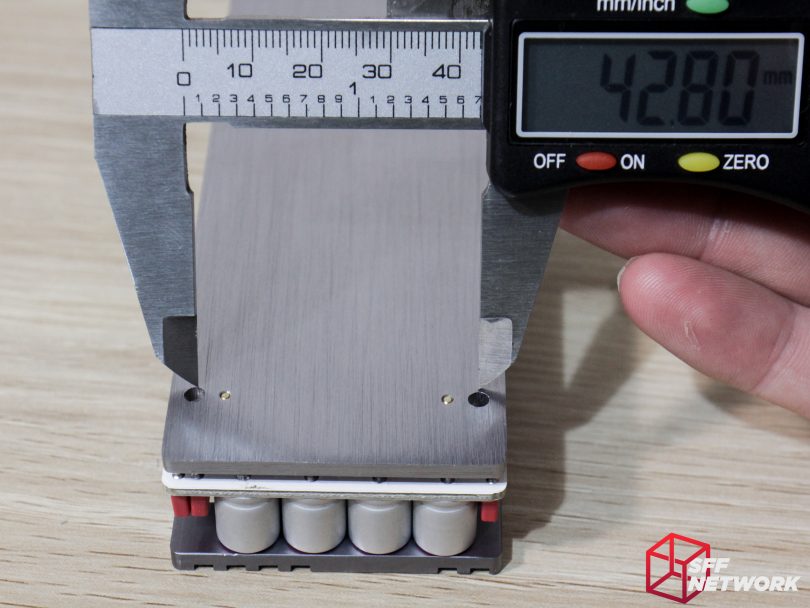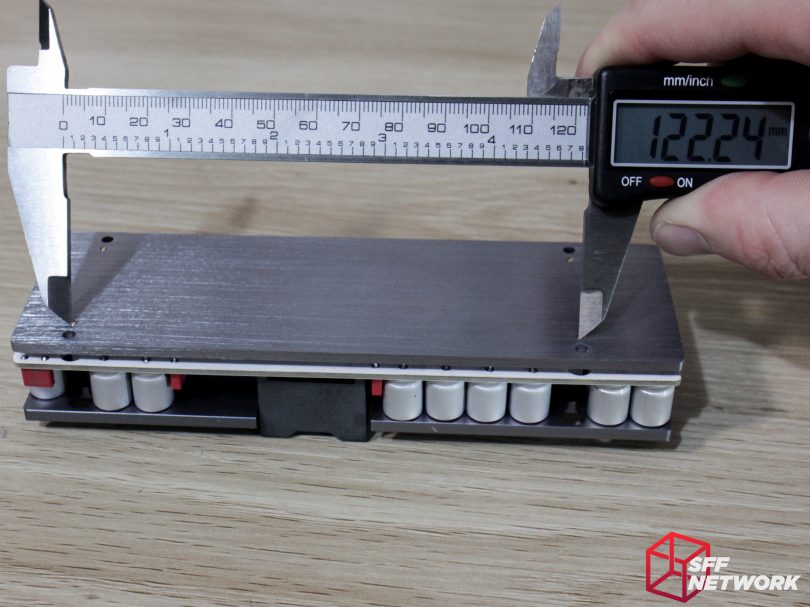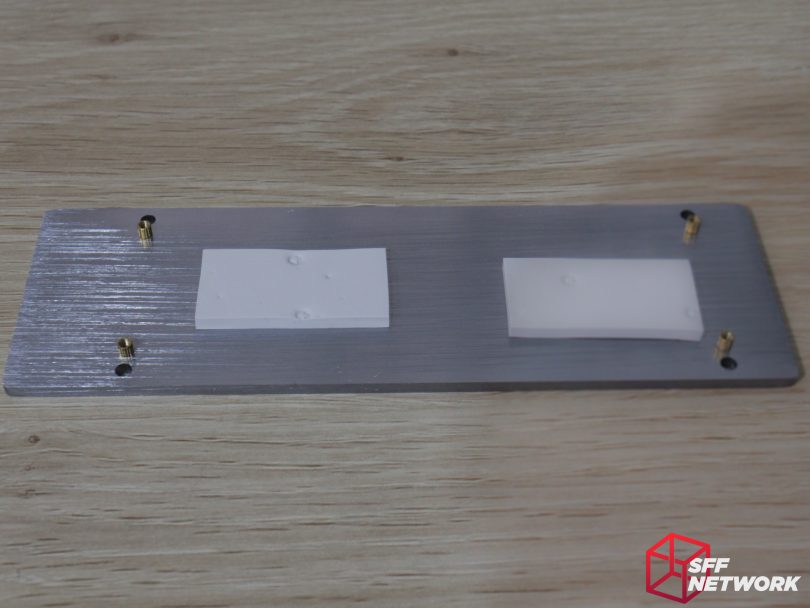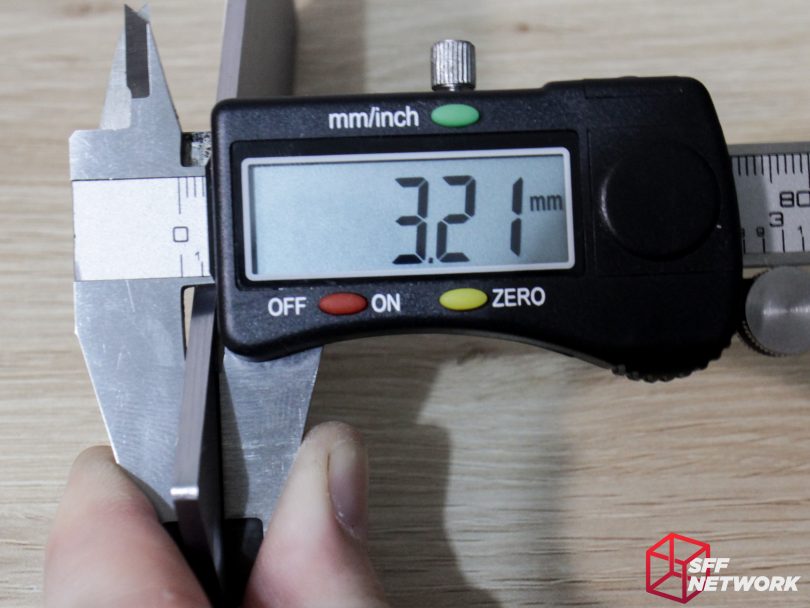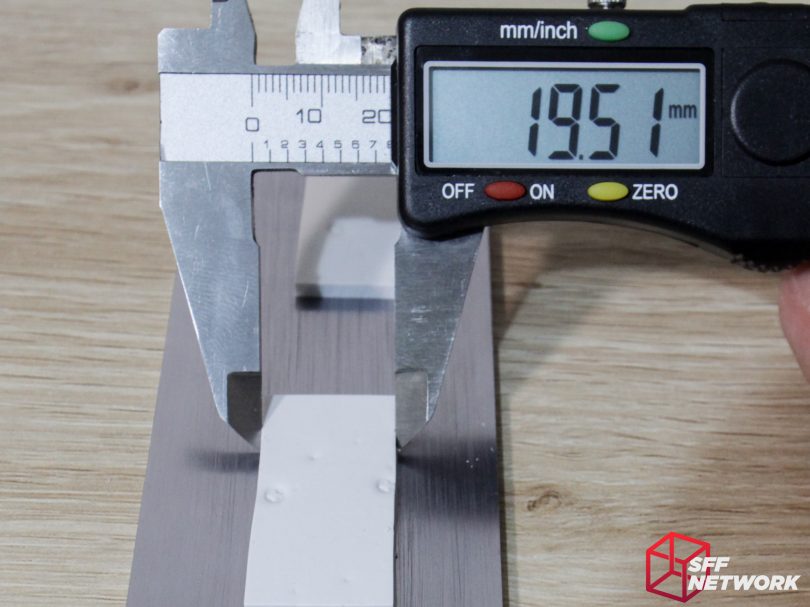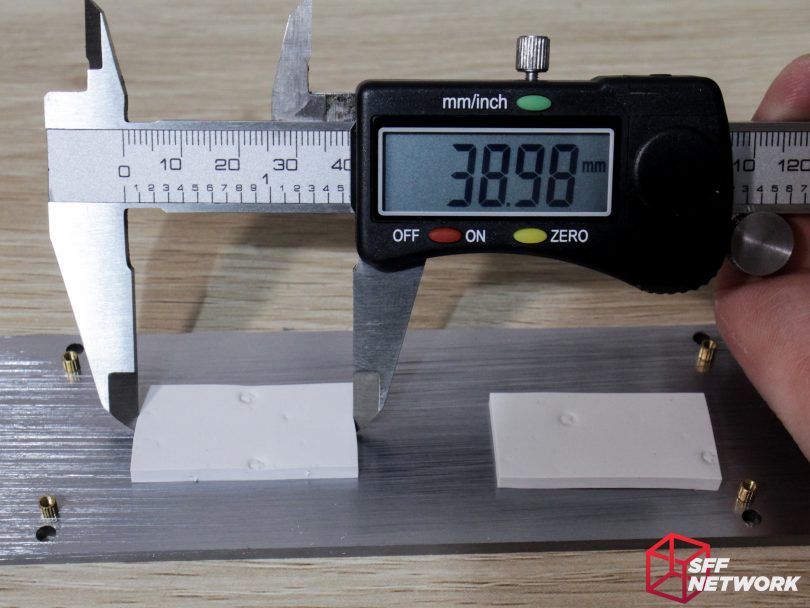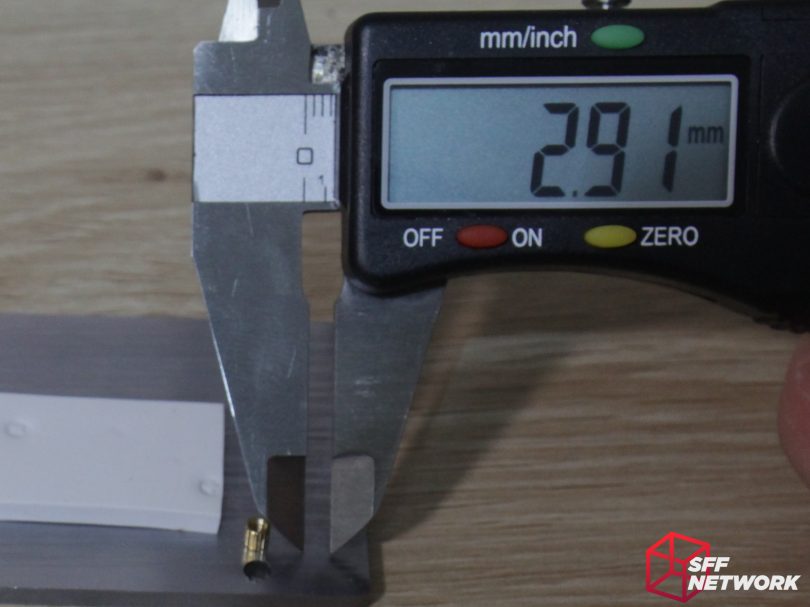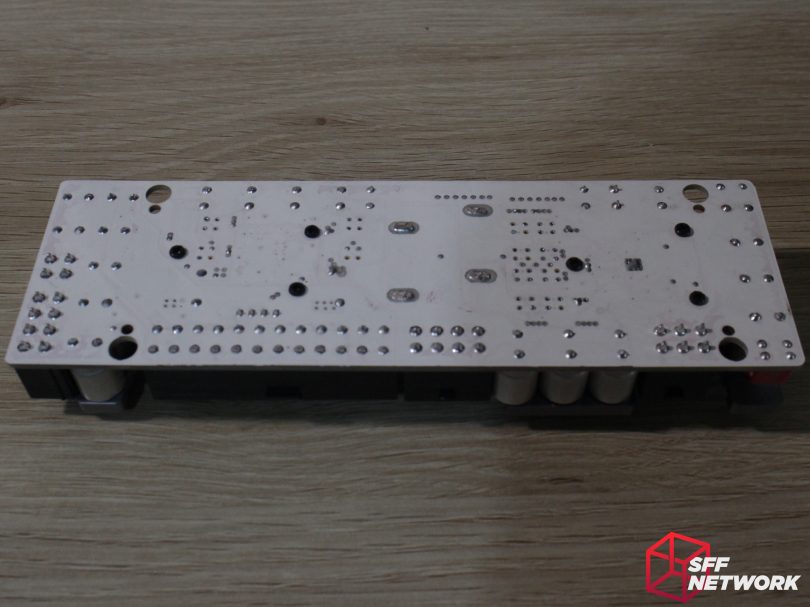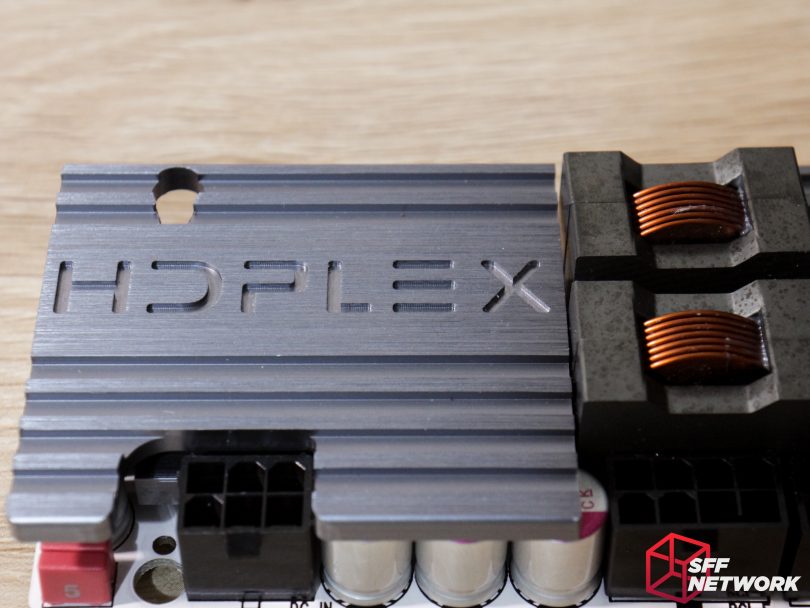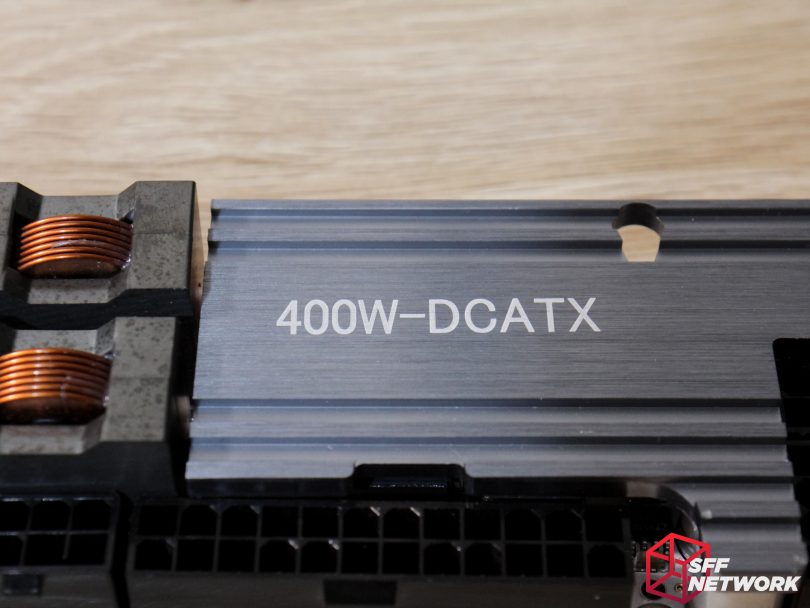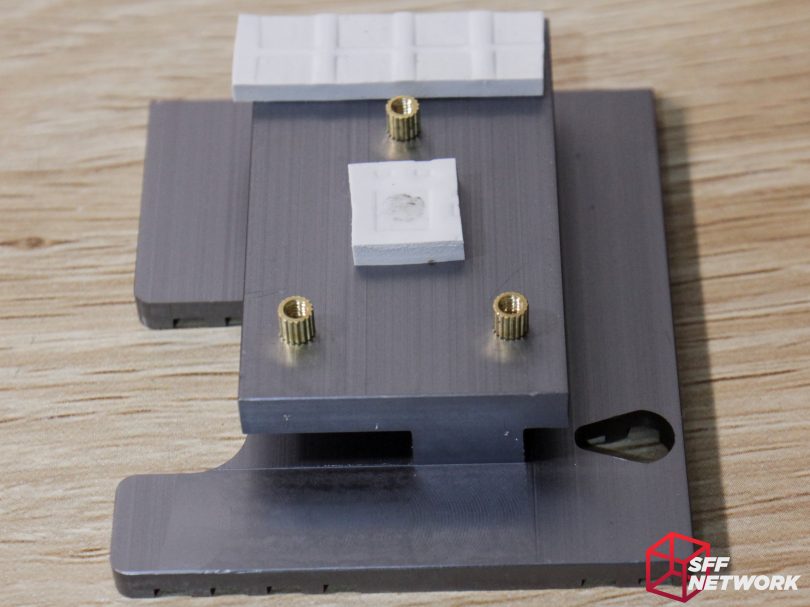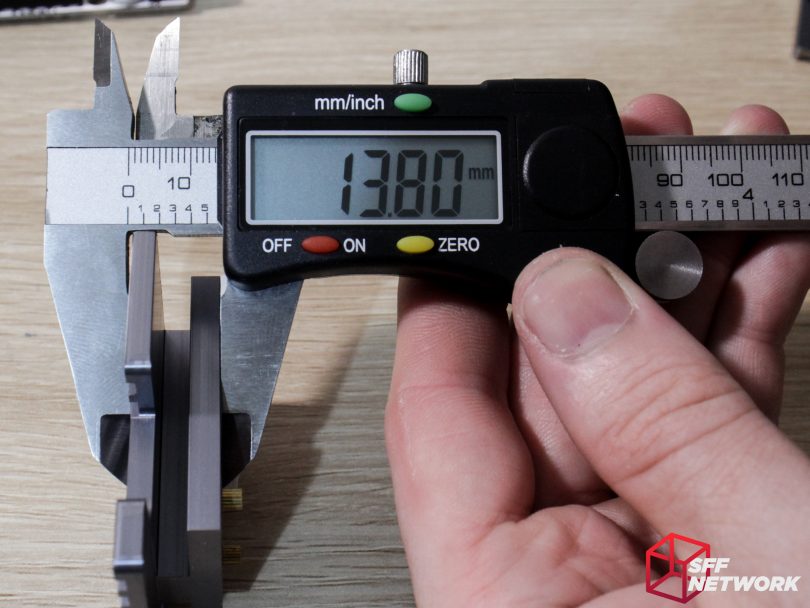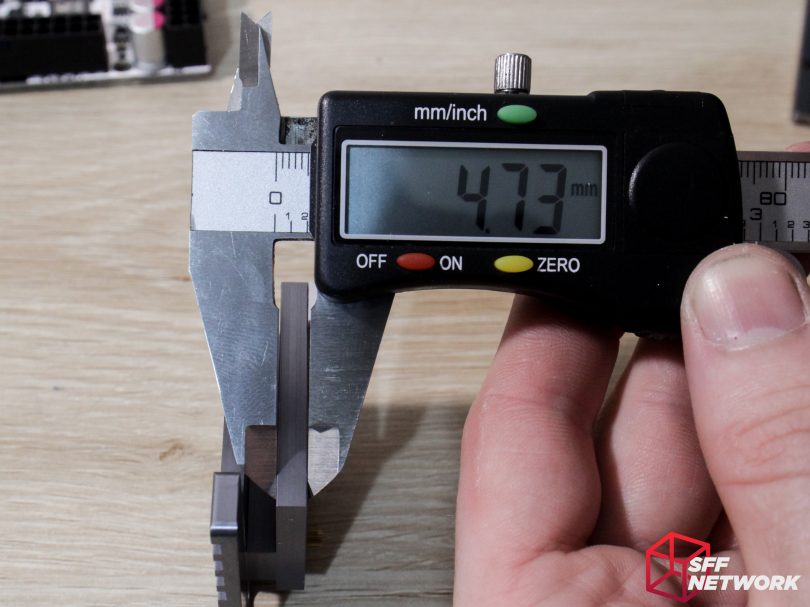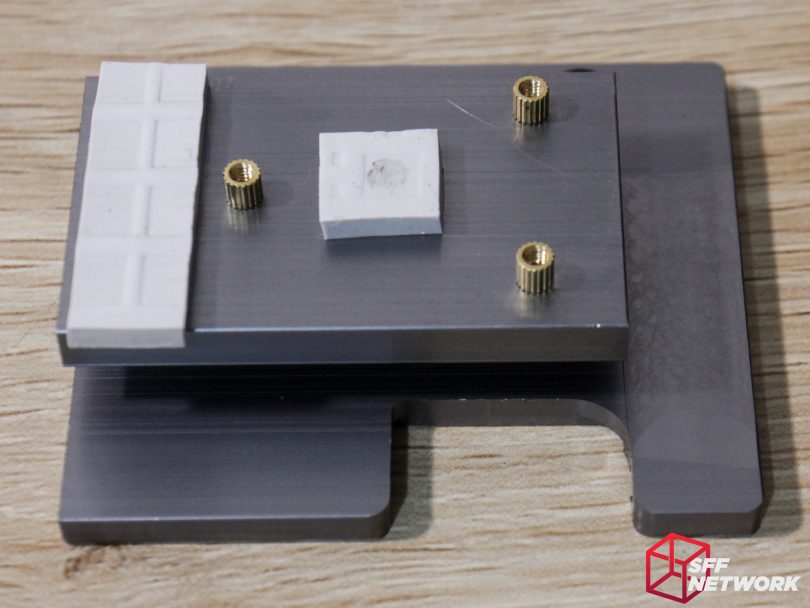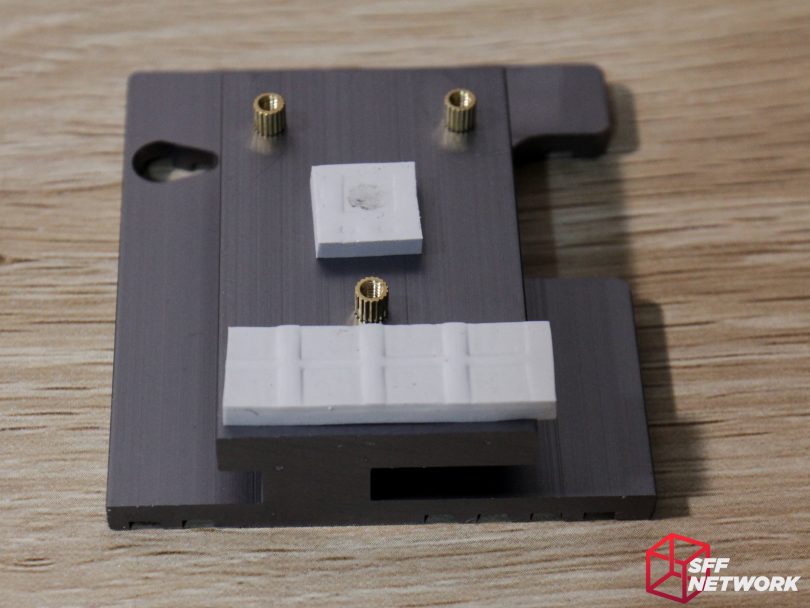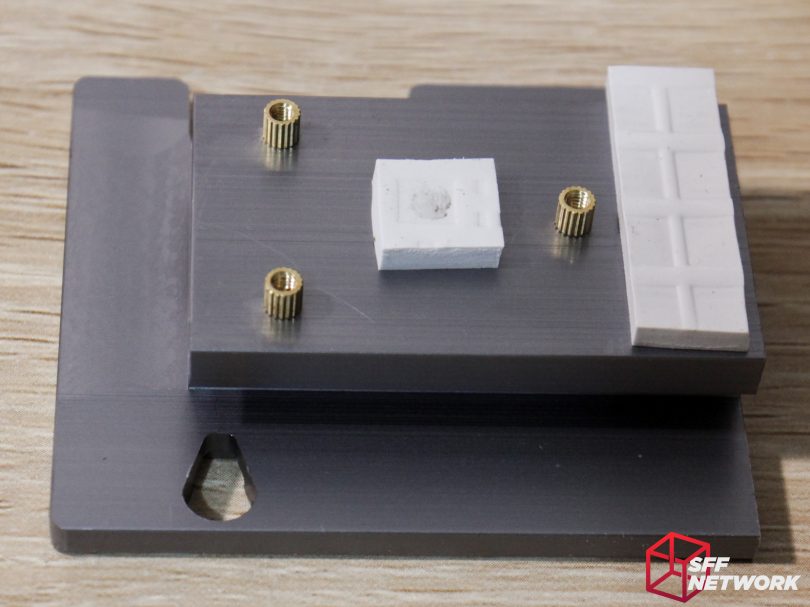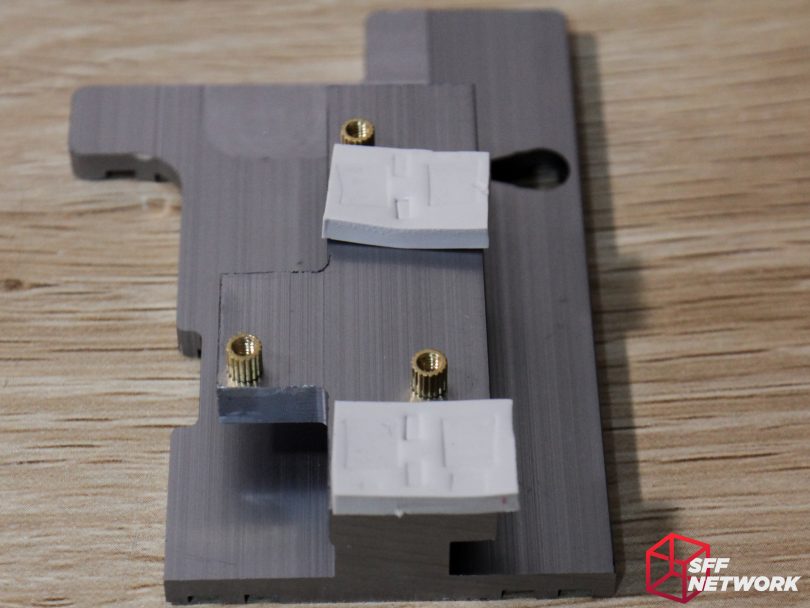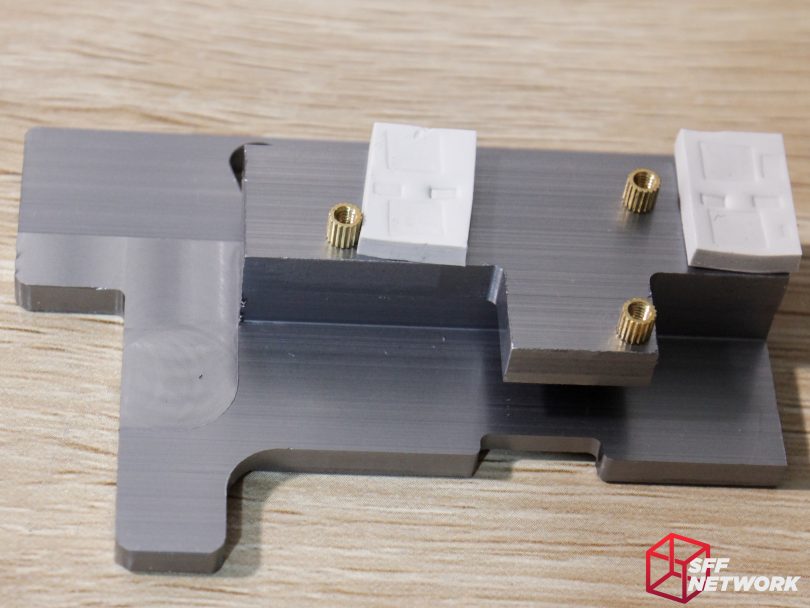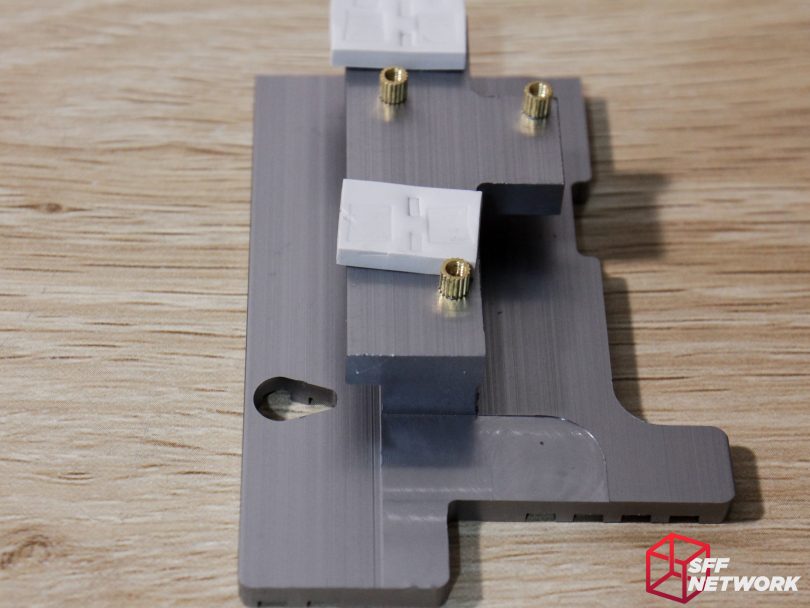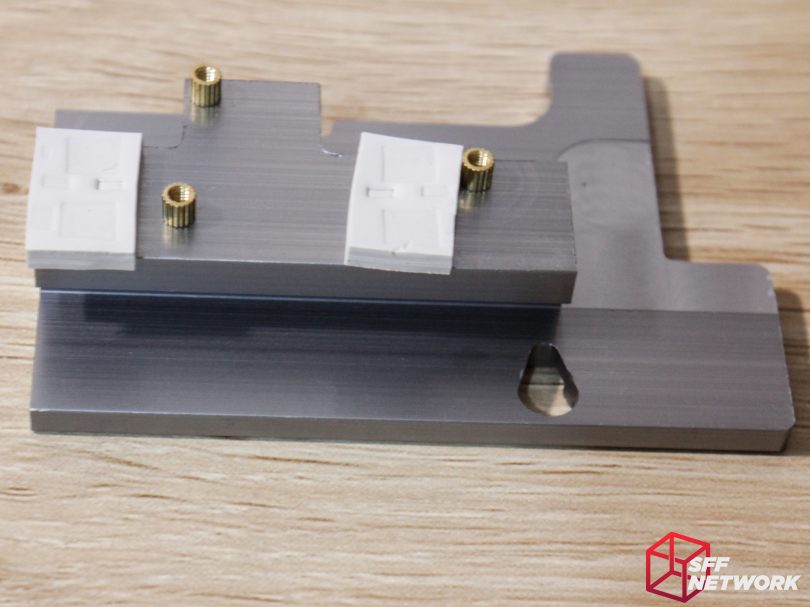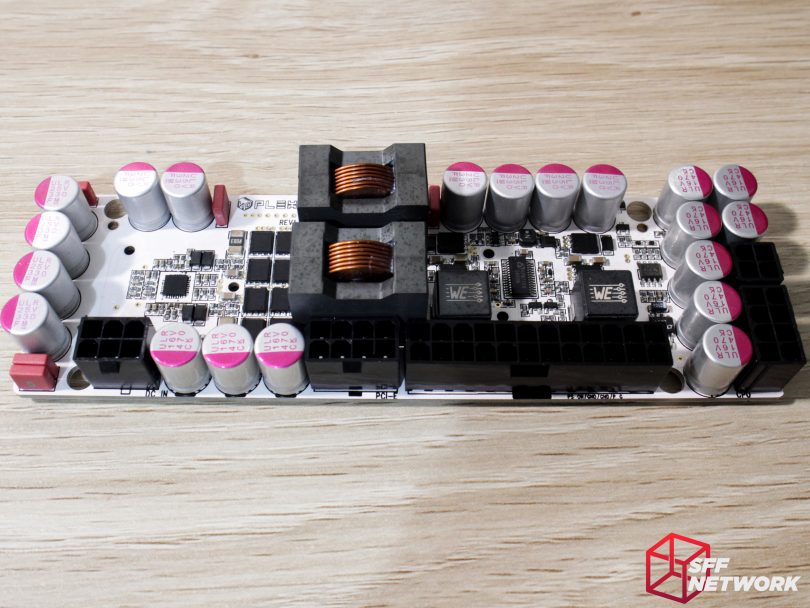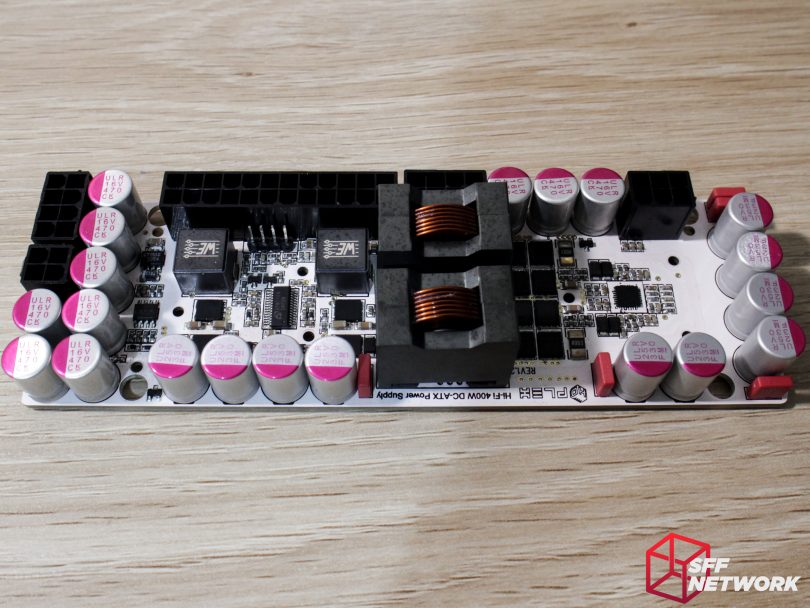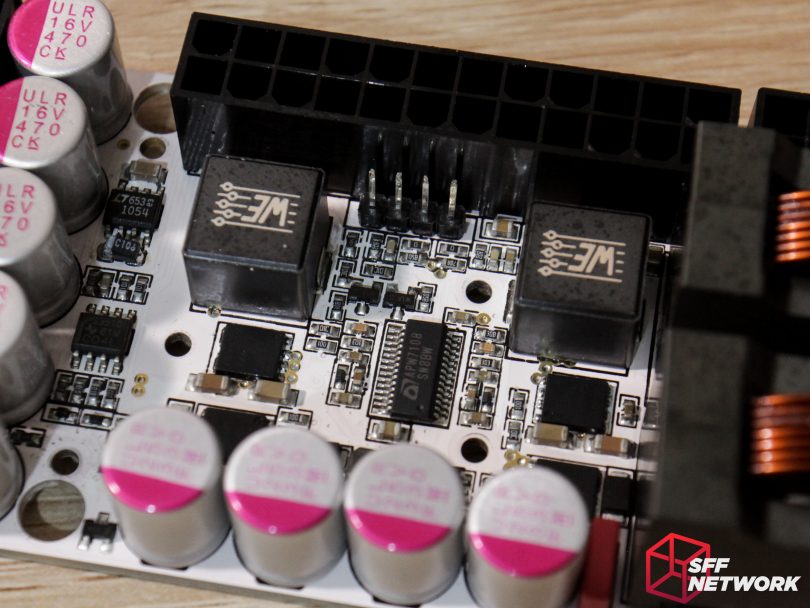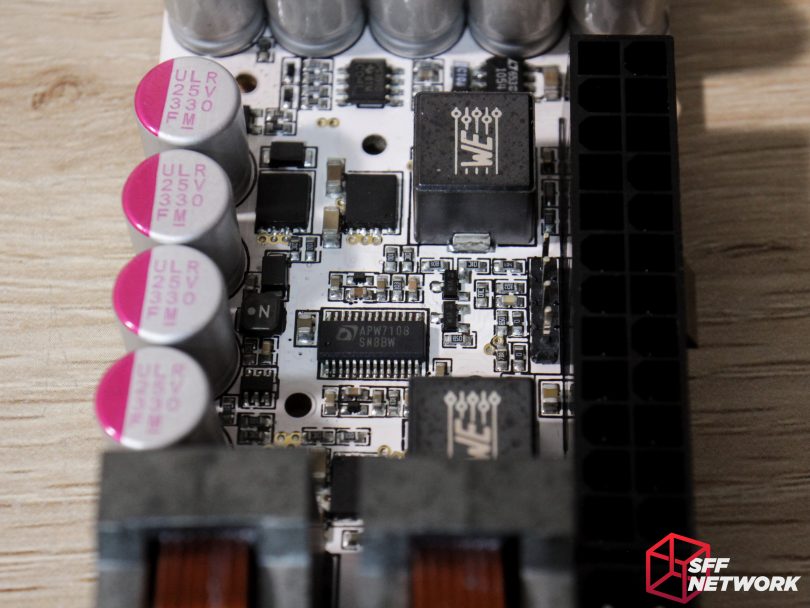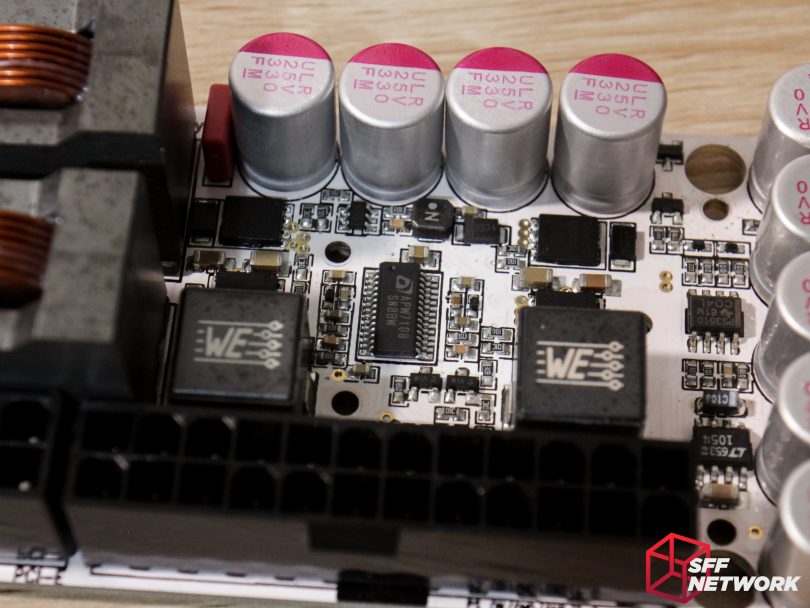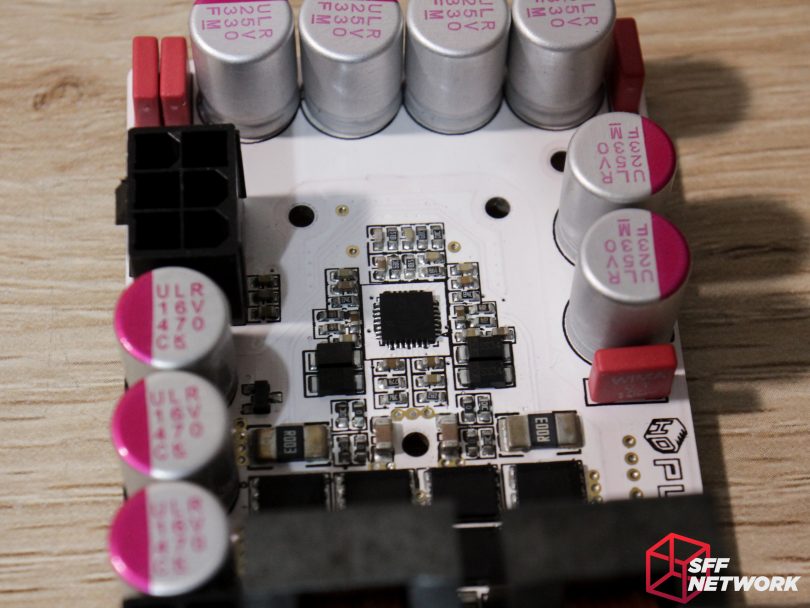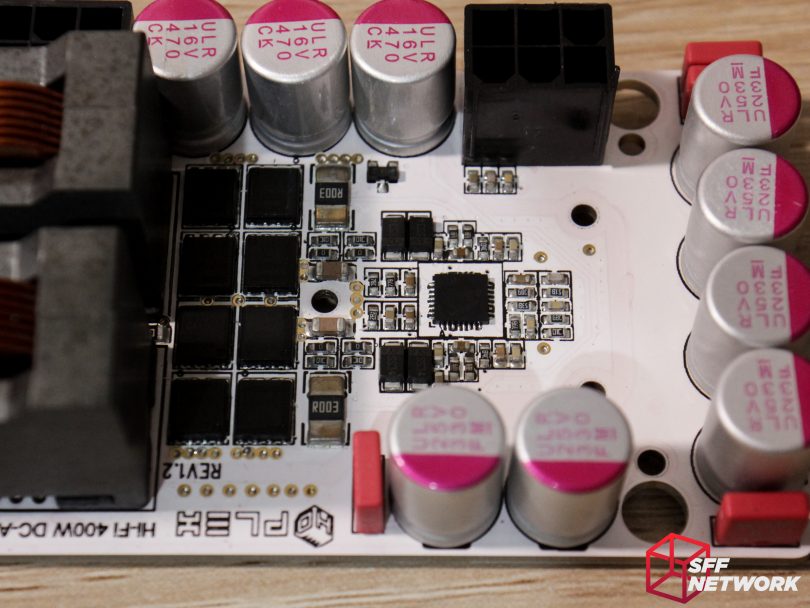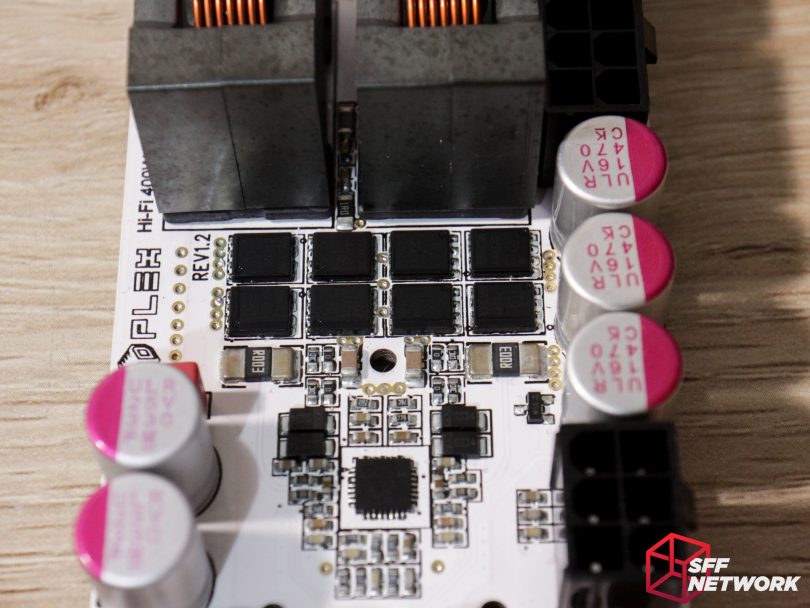With great excitement from the community, HDPlex launched the 400w HiFi DC-ATX power supply a short while back. Replacing the 300w unit that the community loved, this uprated unit adds that little extra “zing” for your system build. With a new design aesthetic, a change from the previous black and white colour scheme, this new 400 watt DC-DC power supply is an exciting addition to the DC-DC PSU world.
There are two factions in the DC-DC world – the 12V designers and the “wide range” designers. One takes 12V in, and pumps out 12V, plus the other voltages needed. While this may be a more efficient in regards to in to out losses, there’s one major issue – the dearth of powerful 12V power supplies that are within a good price range. The other side is the wider input design. Taking usually 16-24V in, these designs take advantage of the huge (and I mean huge!) range of laptop power supplies. From the lower designs, utilising these bricks, newer designs are formed, and now we have the current generation, with highly efficient, wide input, high wattage DC-DC power supplies hitting the market.
The HDPlex range has been a staple of the SFF world for some time, and the new 400W unit has been excitedly anticipated by many of our forum members. Does it hold up to the community’s expectations? Let’s find out.
Table of Contents
The Specs
The following information is reproduced from HDPlex’s product page.
| Output Voltage | Max DC Current | Full Load DC Current | Output Voltage Tolerance | Ripple Noise (mVp-p,MAX) |
| +3.3V | 12A | 10A | 1% | 10mV |
| +5V | 12A | 10A | 1% | 10mV |
| +12V | 50A | 35A | 1% | 10mV |
| +5VSB | 2A | 1.5A | 1% | 10mV |
Features
- 400W nominal (500W peak), >94% DC-DC Efficiency
- Overvoltage Protection
- Overload Protection
- Overcurrent Protection
- Short Circuit Protection
- 16-24V Wide Input
- Operating Temperature: -10°C to 70°C
- 6 Layer 2oz Copper PCB
- PCI Express dual 6+2 pin output, supporting high wattage applications
- High Voltage Endurance SANYO and Fujitsu Solid State Capacitors
- Germany Würth Elektronik High Current Inductance, Smooth Response Curve for Peak Load
- Infineon MOSFET, TI Control Chip, WIMA Audio Grade Capacitor
- Dual Heatsinks for MOSFET and PCB, Fanless Operation
- Optimized Layout for NFC S4 MINI case
- Certification: RoHS (HTT141103075R), FCC (HTT141103075F),CE (HTT141103075E), EN 61003-3-2:2006+A1:2009+A2:2009, EN 61000-3-3:2008
- PCB Dimension: 160(L) x 51.5 (W) x 30 (H) mm
- Mounting hole spacing: 122.1 x 43.3 mm
The Unboxing
The packaging that HDPlex uses is very simple, with just plain brown cardboard and black printing. It’s great to see – the money you pay for the product is focused on the product itself, not some flashy packaging.
With such a small item, the internal packaging doesn’t have to be insanely complex or thick, sometimes cardboard will indeed do. When opening the box, we are greeted with a bunch of cables, and a secondary cardboard tube, containing the party piece, the HDPlex 400W HiFi DC-ATX. We will look at each of these in detail below!
The Accessories
Being a modular power supply, the bulk of the accessory kit is the cabling – with an ATX 24 pin, 4+4 pin EPS, 6+2 pin PCIe, and SATA cable looms provided. Also included are four M3 screws for mounting the PSU, and a DC input socket. See below for lengths of these cables! All measurements are cable lengths, plugs excluded.
It’s interesting that HDPlex has specified the ATX cable at under half the length of the 8 pin EPS cable – an artefact of the unit being designed for the NFC S4 Mini – at 185mm long, the ATX cable would be too short to mount below the bottom of the board, or at the back of the case, and still reach the location of the typical ATX 24 pin connector on your board.
The input jack is a 7.4mm x 5.0mm jack, which is centre ground. The M3 mounting holes are 20mm apart, and are centred 1mm lower than the input jack. The PCB the jack is mounted to measures 32mm by 19mm. This is a handy addition to the HDPlex 400W HiFi DC-ATX package, however I wouldn’t recommend pumping 400w through this connector – that’s 21 Amps at 19V!
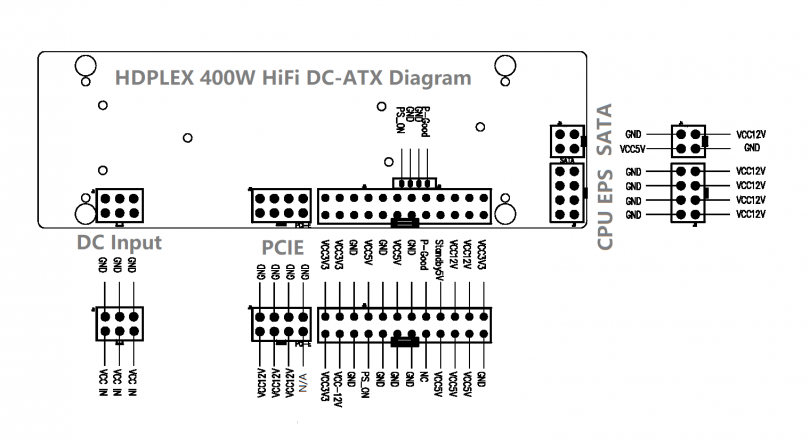
The HDPlex 400w HiFi DC-ATX
Sealed for your protection. The HDPlex 400W HiFi DC-ATX comes wrapped in it’s own little anti-static bag, which just shows there is care taken with each product that HDPlex produces.
Here we go, the 400W HiFi DC-ATX. The new heatsink laden design is a big step up from the previous 300W variant, lending a hint of performance, but also linking to the subtle heatsinks on today’s motherboards. Connectors for the modular cables are laid out around the perimeter of the board, with input to the left, and the outputs to the centre-right. From the PCIe 8 pin connector (which splits to dual 8 pin connectors at the other end of the loom), we then have the ATX 24 pin (which splits to 20+4 pin at the motherboard end), then the EPS 8 pin (also splits, this time to dual 4 pin) and finally SATA (which offers power for 4 drives).
Centre stage are a pair of relatively huge inductors, which should help alleviate the 300W version’s coil whine issues – a larger coil means a much different frequency is needed to resonate the component.
On the underside is a solid aluminium panel, mounted with four standoffs. This plate also enables the mounting of the unit to your chassis, with 4 screws holes accessible through larger holes in the top heatsinks.
The tallest parts of the PSU are the inductors, by far. Make sure you leave at least 31mm in height for this unit if you plan on using it in a custom chassis. Gorgeous hand modelling courtesy of yours truly.
Measuring in at just under 52mm wide and 160mm long (165 mm including the retention clips on the Molex Mini-Fit Jr plugs), the HDPlex is quite a lot smaller than Flex-ATX or 1U power supplies! This is one advantage of moving the AC-DC portion of the power supply to a separate unit, albeit with the obvious negative point of having to power the DC-ATX unit somehow!
The two high current inductors are the standout features of the design, however my review unit seemed to have a less than standard appearance on the ferrite section. However, this seems to be normal when compared to the other units I have seen images of.
What good is a power supply if it can’t be mounted? The HDPlex 400w HiFi DC-ATX mounting holes are around 43mm, by…
122mm. The holes are large enough for the included M3 screws.
Removing the bottom plate reveals that even this part of the design has a use – it draws extra heat from the components on the PCB via two non-electrically conductive thermal pads.
The bottom plate is 3.2mm thick, which seems like a strange thickness until you convert it to old fashioned measurements – this is 1/8th of an inch thick.
The thermal pads are 19.5mm by…
39mm or so – I may have squished the pad a little measuring it.
The thermal pad is 2.9mm thick.
An aesthetically pleasing white silkscreen has been applied to the PCB, meaning that black printing is easy to read. The soldering is high quality, with no extra bits of solder risking a short circuit.
The left side heatsink has the HDPlex logo machined into it, a nice touch. To the bottom here, the power input socket is a 6 pin Mini-Fit Jr, with a mounting hole for the baseplate, and a larger hole for the screw access to the PSU mounting holes in the base.
Alas, the 400W-DCATX moniker is screenprinted onto the right side heatsink. This also doesn’t match the official model name – the “400W HiFi DC-ATX” instead of “400W-DCATX”. A small notch is cut from the heatsink allows access to a function header – enabling direct access to the PWR_ON and PWR_GOOD pins, meaning that jumpering this PSU to an on state is easy!
The left side heatsink is a wonder of machining, being made from an extruded profile, then CNC milled to fit the componentry on the PCB. Thermal pads are used here again, and are of the same thickness as the pads on the baseplate.
At 13.8mm thick, this is a serious chunk of aluminium.
And with a base thickness of around 4mm, there is a lot of meat here to suck heat away from the components.
The right side heatsink follows a similar format, and appears to be from the same extrusion.
I love me some milling witness marks.
The OCD sufferer in me is pleased with the capacitors here. HDPlex’s board layout is an exercise in simplicity here, with everything laid out logically.
A close up of the DC-DC output and monitoring section. The central chip here is an APW7108, a dual channel PWM controller. All the MOSFETs on the board, in both this section and on the other side of the inductors, are Infineon OptiMOS 3 M-Series Power Mosfets, specifically the BSC080N03MS, rated at up to 53 Amps… per chip! To the far left, we have a Linear Technology LT1054, a voltage convertor and regulator. Below this is a Texas Instruments TPS3510 monitoring chip.
To the right, just next to the ATX connector is a header allowing direct access to the PWR_ON and PWR_GOOD pins – allowing you to manually set PSU states.
In case you are wondering, the little red boxes are WIMA MKS4 0.1uF radial film capacitors.
Near the input connector, we have a bunch of MOSFETs next to the inductors, identical to the ones we spotted above.
The large QFP (Quad Flat Package) chip in the centre has been ground a little, obscuring the markings. Due to it being surrounded by a bunch of small passives (decoupling caps, etc), and due to the pin count, I figure that this is a controller chip. Thus ends my reverse engineering.
Larry from HDPlex responded to my query on this chip and let me know that this was a TPS51222, which Google advises me is a buck-boost regulator.
Let’s just take an aside for a moment and talk about obfuscated components. It seems over the past couple of decades, we have gone from clear instruction manuals, PCB layouts and wiring diagrams being included with hardware (and to a wider extent, cars, electronics, etc) to a world where manufacturers deem it OK to hide stuff from consumers by scrubbing chips, potting hardware where it really isn’t needed, and the like. It’s a sad day when the interested amongst us are made unable to truly own our devices.
Large quantities of waste hits our landfills every day because manufacturers make it impossible to repair our own possessions. We are forced to dispose of perfectly good items because a single sub-system has failed, and we are made unable to find or replace the faulty component. We are glued out, sealed out, or flat out potted out of reducing our impact on the environment and our finances.
Some manufacturers may make a case that the obfuscation or locking down of their devices limits industrial espionage, the clone market, the counterfeit market. This is flat out untrue. Any engineer worth their salt can reverse engineer a device, even if every component has had the markings shaved off.
The Test Setup
As of yet, we do not have professional grade load testers, oscilloscopes or the like, but we do have real world scenarios. I connected the HDPlex 400W HiFi DC-ATX to my SFFn workstation, and put it through it’s paces.
The workstation:
| CPU | Ryzen 5 1600X |
| GPU | Sapphire R7-270X @ 1100MHz |
| RAM | 2x 8GB DDR4 |
| Storage | 240GB 2.5″ SSD |
| Cooling | Noctua NH-D9L |
| Approx Total Wattage | 300w |
| AC-DC Convertor | HDPlex 300W AC-DC |
| DC-DC Convertor | HDPlex 400w HiFi DC-ATX |
| Ammeter | Klein CL100 AC Clampmeter |
The testing involved a few hours of regular use, then 4 more hours of 3DMark and Prime95 Blend at the same time, a true torture test.
The Results
During regular use, I noted no noise, excessive heat or instabilities. In an ambient of 22 degrees, the heatsink of the HDPlex 400W HiFi DC-ATX hovered around 32 degrees Celsius at its hottest point, a 10c delta. During this testing, the system hovered between 75 and 120W at the wall.
I then loaded the system, reaching a sustained peak of 350W at the wall, which works out to be around 300W output from the HDPlex 300W AC-DC after conversion losses. During this test step, the HDPlex 400W HiFi DC-ATX reached a maximum of 15 degrees above ambient, a fantastic result, and a hint that the PSU is very overbuilt for the task at hand.
During these tests, I noticed nothing untoward in the motherboard monitoring utility in regards to voltages – although these utilities are never very accurate! Using a multimeter, everything looked good, with no readings outside of the ATX specification.
As an aside, the HDPlex 300W AC-DC reached a peak of 69C during testing, a delta of 47 degrees. Not bad, considering it was running at the maximum rated output, sustained!
I noticed absolutely no instability, boot or performance issues during the long period of testing the unit endured.
The Conclusion
Overall, my experience with the HDPlex 400W HiFi DC-ATX was great, with no performance issues, great build quality and fantastic aesthetics. Apart from the aforementioned obfuscated chip issue, the product is well designed, stable under the testing I performed, and is overall good value for money.
You will of course need to provide a AC-DC power supply to power the unit, as well as custom mounting for the PSU, but that’s not a biggy in our passionate, creative community.
Pros
- 400W!
- Passive
- Wide Input
- Modular
- Price
- Great build quality
- Runs cool
Cons
- Obfuscated hardware
- Screenprinted model name on heatsink
Niggles
- Mounting screw holes are difficult to access through heatsink and PCB
[mks_separator style=”blank” height=”2″]
Power over to the forum and leave your thoughts in the discussion thread.

